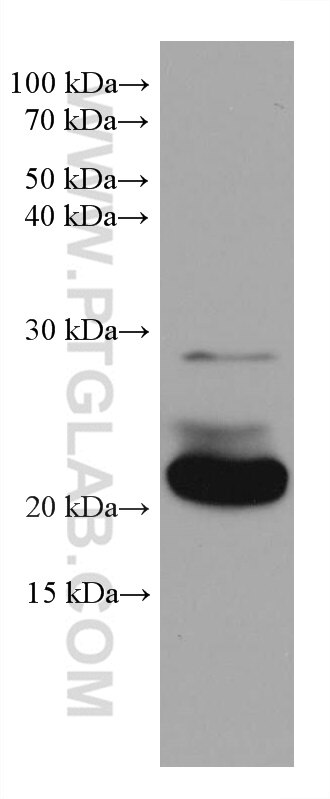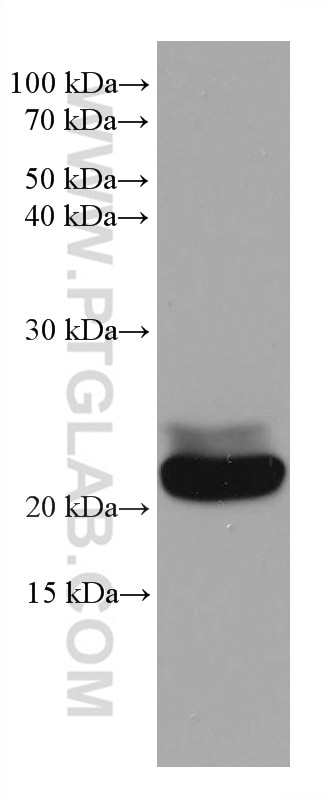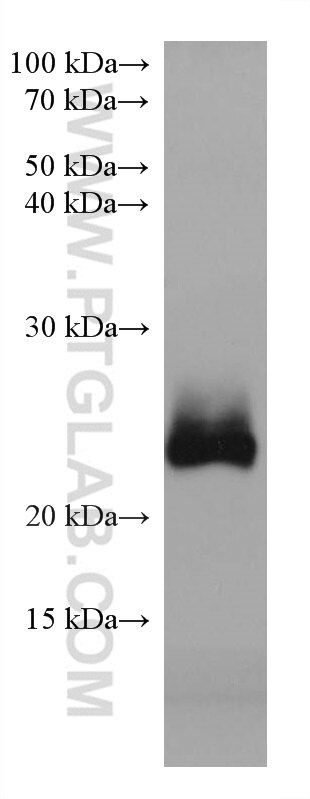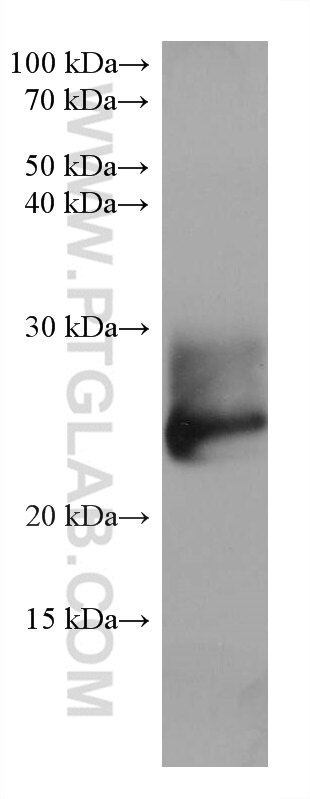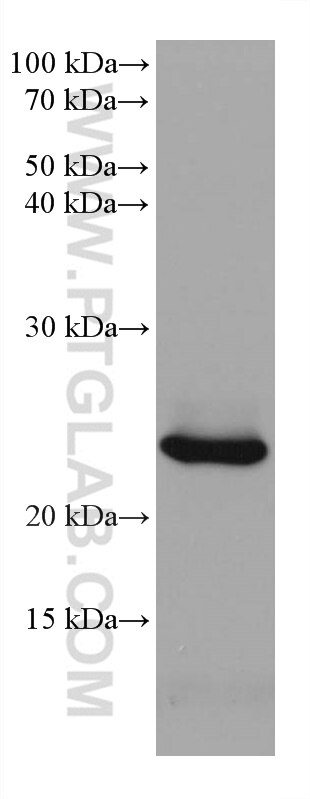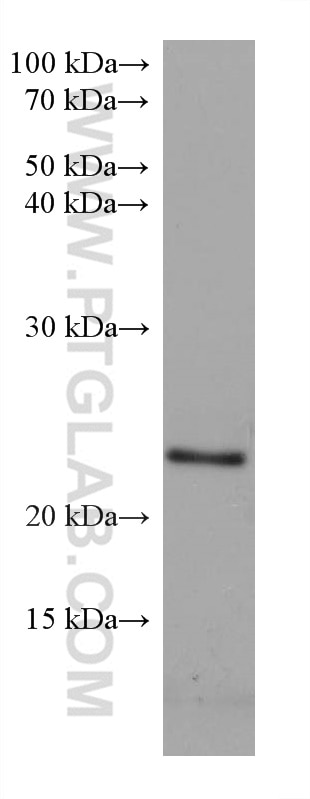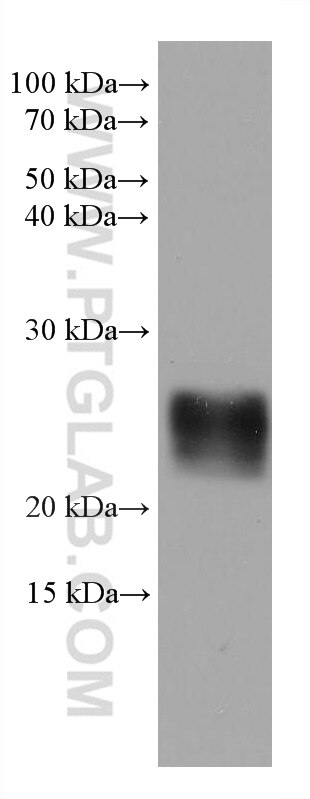RAB39B Monoclonal antibody
RAB39B Monoclonal Antibody for WB, ELISA
Host / Isotype
Mouse / IgG2b
Reactivity
Human, mouse, rat, rabbit, pig
Applications
WB, ELISA
Conjugate
Unconjugated
CloneNo.
2F4F7
Cat no : 68014-1-Ig
Synonyms
Validation Data Gallery
Tested Applications
| Positive WB detected in | rabbit brain tissue, Jurkat cells, LNCaP cells, pig brain tissue, mouse brain tissue, pig cerebellum tissue, mouse cerebellum tissue |
Recommended dilution
| Application | Dilution |
|---|---|
| Western Blot (WB) | WB : 1:5000-1:50000 |
| Sample-dependent, check data in validation data gallery | |
Product Information
68014-1-Ig targets RAB39B in WB, ELISA applications and shows reactivity with Human, mouse, rat, rabbit, pig samples.
| Tested Reactivity | Human, mouse, rat, rabbit, pig |
| Host / Isotype | Mouse / IgG2b |
| Class | Monoclonal |
| Type | Antibody |
| Immunogen | RAB39B fusion protein Ag27170 相同性解析による交差性が予測される生物種 |
| Full Name | RAB39B, member RAS oncogene family |
| Calculated molecular weight | 213 aa, 25 kDa |
| Observed molecular weight | 25 kDa |
| GenBank accession number | BC009714 |
| Gene symbol | RAB39B |
| Gene ID (NCBI) | 116442 |
| RRID | AB_2918760 |
| Conjugate | Unconjugated |
| Form | Liquid |
| Purification Method | Protein A purification |
| Storage Buffer | PBS with 0.02% sodium azide and 50% glycerol pH 7.3. |
| Storage Conditions | Store at -20°C. Aliquoting is unnecessary for -20oC storage. |
Background Information
RAB39B is a member of the RAB GTPase family with a putative role in vesicle trafficking. RAB39B is predominantly expressed in neuronal cells and is localized to the endoplasmic reticulum, Golgi and trans‐Golgi recycling endosomes. Several reports suggested that RAB39B may regulate protein trafficking and the PI3K-AKT-mTOR pathway. Mutations in RAB39B are known to be associated with X-linked intellectual disability (XLID), Parkinson's disease, and autism.
Protocols
| Product Specific Protocols | |
|---|---|
| WB protocol for RAB39B antibody 68014-1-Ig | Download protocol |
| Standard Protocols | |
|---|---|
| Click here to view our Standard Protocols |
